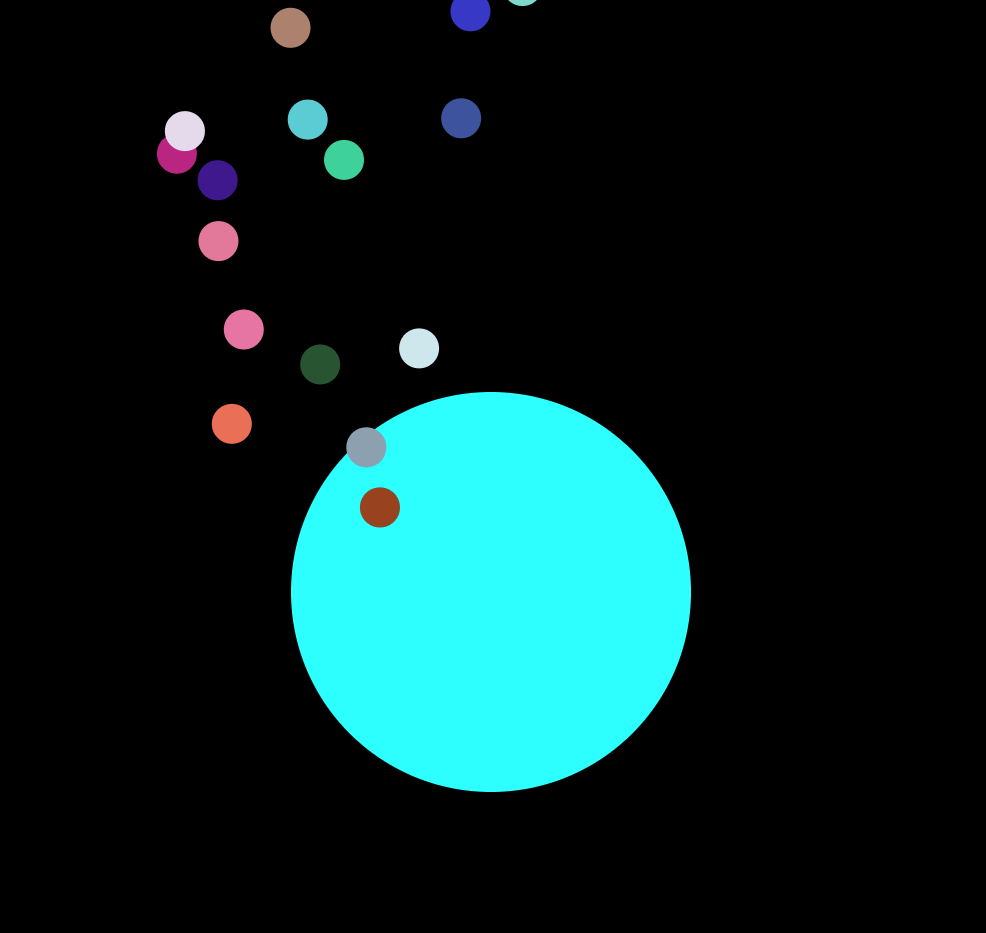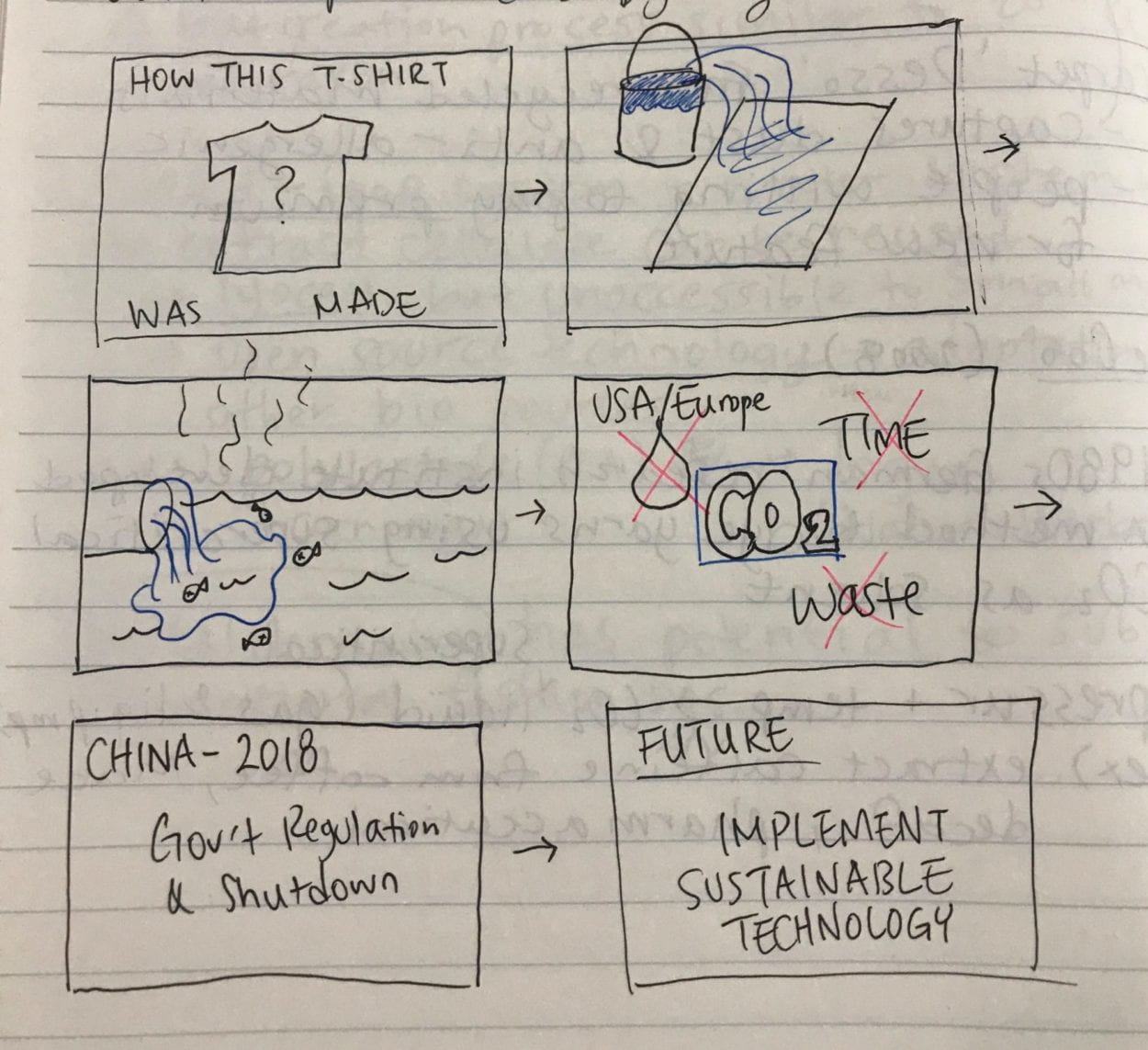Presentation Link: https://docs.google.com/presentation/d/1jB7Yyh3Bi5y3IJOwyuJR0vV3U5c11qpTwXW-aXDzdnE/edit?usp=sharing
NOC: HW6 & Midterm Proposal Slides – Ji Hwan Shin
Link to code: https://editor.p5js.org/jihwanshin96/sketches/quRyhOjtc
Link to ppt: https://docs.google.com/presentation/d/1bPAoklxJha6gEeJqADsru1RmpAS3vR6W7ZY1D9AkBCM/edit?usp=sharing
For this week’s assignment, I wanted to play around with attractions and forces. I thought it’d be interesting to try to emulate the rings of a planet revolving around. So I placed an ellipse in the center and manipulated the particles to be attracted to the center sphere. But I must have written something wrong in declaring the class particles because it would not recognize various functions like force, attraction, or gravity. I implemented the methods I learned in class but had some trouble getting the code to work. In the end, I wasn’t able to achieve my desired result but I will keep tweaking the code to see what I did wrong.


**Update**
I realized that the ellipse has to be a particle with a specific mass for gravity to work around it. But I still wasn’t able to get a rotating orbit, more like a black hole.

Final Project Progress – Ji Hwan Shin
For my final project, I was thinking of looking into the dyeing process of fabrics between two regions – China and the US/Europe. The textile industry uses trillions of liters of freshwater every year. But these resources become polluted and return to the ecosystem, causing hazardous effects on people and the environment. Carcinogenic chemicals from the waste are directly released into our waterways, posing serious health risks. But recent developments in dyeing processes – especially dry dying and dyes from natural plants – are seeking to eliminate water and energy waste. The US/Europe region has been implementing these methods with some success despite the burden of manufacturing costs and limitations in addressing a range of fabrics. China on the other hand, has been under tight scrutiny due to its ‘Green Agenda,’ that seeks to crackdown on pollution in the 2018-2020 period. I believe that increased government regulation in this area is an incentive for industries to implement sustainable methods of dyeing fabrics. I will attempt to create an interactive video that will be an educational overview of these current trends in dyeing fabrics, and come to a conclusion on effective methods of sustainability in China, including any limitations and roadblocks.


Week 4: Response to Annie Gullingsrud and Lewis Perkins – Ji Hwan Shin
In this reading, I learned about the design standards set by William DcDonough and Dr. Michael Braungart in creating garments that are both fashionable and sustainable. They based their ideas on the closed loop, circular economy that aims to work with materials that are safe and have strategies for take-back, disassembly, fiber separation, re-production. From the steps they laid out, I thought the aim to put CO2 emissions back into the earth and having clean water as byproduct of manufacturing very interesting. They compared CO2 emissions as “gold” that most factories spew out into the atmosphere. While putting this waste back into the ecosystem seems idealistic, they didn’t really give any examples of companies that succeeded in doing so. However, I liked the example of Designtex that accomplished the reuse of discarded fabrics in the manufacturing process by turning them into biodegradable cover tops in farming. I also felt the need to really pay attention to the social aspect of fashion, knowing the condition of workers in making the clothing I wear on a regular basis. Like the author stated, both technological and material diversity are needed to spur innovation. But innovation cannot exist without happy workers. Implementing better methods of production requires change institutionally and infrastructure-wise. Change occurs slowly, but is necessary in the current growth towards sustainable revolution.
Week 3: Group 3 Presentation – Ji Hwan Shin
Team members: Salomon Ruiz, Dominick Nardone
For our group presentation, we talked about the development of sustainable technology and how it has been implemented in the fashion industry. We divided the presentation into three parts – manufacturing, consumption, and disposal. I was in charge of researching about manufacturing, Dominick did consumption, and Salomon focused on disposal. We drew a lot of our findings from the class readings and personal research.
I quickly summarized the current sustainable developments related to fashion such as wearable technology, renewable fibers, and eco-tech fashion. I realized that the current trend of sustainable technology employed in factories is committing to a closed loop system, in which the byproducts from manufacturing can be reused in other steps in the product cycle. The goal of most current sustainable technologies is to retain value, address the growing population’s demands, and to be eco-friendly. Two companies succeeded in transitioning to a cradle to cradle system. The first one being a carpet company called ‘Desso’ that recycles used or disposed carpet parts to create a dust catching and hypoallergenic carpet. The second company, called ‘DyeCoo’, implemented the usage of supercritical CO2 as solvent when dying fabrics, eliminating the need to waste several thousand liters of water.
Dominick focused his research on many interactive methods used online that help consumers make sustainable choices when purchasing products like the self tailoring app in shopping malls and websites like etsy and ebay. Salomon also talked about the importance of the digital realm but in the process of disposing of garments. We showed the class an interesting video made by H&M introducing their initiative to recycle used clothing. They recently applied the hydrothermal method to separate cotton and polyester blends into new fibers. Overall, we were able to give a very encompassing and informative presentation. I had a great time working with my teammates and learned a lot about the different types of technological innovations in the fashion industry.